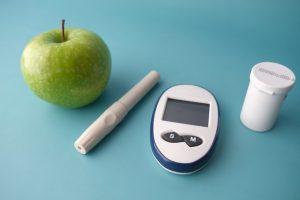
Does standing help with insulin sensitivity?
Can insulin sensitivity be restored
An individual can lower their risk of acquiring type 2 diabetes, even if they are overweight, by standing up during extended periods of sitting, according to a recent study.
By 2030, the UN wants to reduce noncommunicable disease-related fatalities by one-third. This is the third of the Sustainable Development Goals.
The fight against chronic diseases caused by a sedentary lifestyle must begin now, quite literally. According to a recent study, standing can aid in the prevention of significant medical diseases, including type 2 diabetes.
Standing is associated with improved insulin sensitivity, according to research from the Turku PET Centre and UKK Institute in Finland.
Blood sugar levels and metabolic processes in the body are controlled by insulin. However, factors like being overweight can interfere with the way the body’s insulin hormone works, resulting in a reduction in insulin sensitivity and a higher chance of developing chronic illnesses like type 2 diabetes.
The body’s cells’ receptivity to insulin is referred to as their insulin sensitivity. The body’s cells can utilize blood glucose more efficiently when there is high insulin sensitivity, which lowers blood sugar levels. This sensitivity may benefit from some dietary and lifestyle adjustments.
What is insulin resistance?
Insulin tolerance, or reduced insulin sensitivity, is a condition in which a person’s body has developed a resistance to the hormone, decreasing its potency. More insulin is therefore required to convince the liver to continue storing glucose and the fat and muscle cells to take up glucose.
Low insulin sensitivity occurs when there is insulin resistance. The opposite is true if you have low insulin resistance and are sensitive to insulin. The health benefits of insulin sensitivity outweigh those of insulin resistance. When cells stop responding to the hormone insulin, it is said that insulin resistance occurs.
What are the symptoms of insulin resistance?
You will not experience any symptoms if you have insulin resistance and your pancreas is able to produce more insulin to keep your blood sugar levels within a healthy range.
Although the cells in your pancreas that produce insulin might deteriorate and insulin resistance can worsen over time. A raised blood sugar level (hyperglycemia), which does result in symptoms, is eventually caused when your pancreas is no longer able to generate enough insulin to overcome the resistance.
Symptoms of high blood sugar include:
• Increased thirst.
• Frequent urination (peeing). Increased hunger.
• Blurred vision.
• Headaches.
• Vaginal and skin infections.
• Slow-healing cuts and sores.
Prediabetes frequently goes unnoticed for years by many people. It is possible for prediabetes to go undetected before turning into Type 2 diabetes. The following signs and symptoms are possible in some prediabetic individuals: –
People with diabetes are more prone to consequences like heart disease, stroke, blindness, kidney failure, and kidney stones, as well as an increased risk of dying young. The disease, which accounts for 1.5 million deaths annually throughout the world, affects one in eleven people.
Standing improves insulin production.
Although it is well known that exercise can benefit people with diabetes and other noncommunicable diseases, the Finnish study was unique in that it focused specifically on how inactivity affects the production of the hormone insulin.
The results, which were reported in the Journal of Science and Medicine in Sport, showed that even among inactive adults who were more likely to acquire type 2 diabetes, insulin function improved when research participants broke up extended periods of sitting by standing up. No matter how long a person sat, how active and fit they were, or whether they were overweight, standing improved their insulin levels.
A worldwide problem
All around the world, noncommunicable diseases (NCDs) like diabetes, heart disease, cancer, stroke, and chronic lung illnesses are becoming more and more of an issue. So much so that the third Sustainable Development Goal (SDG) of the United Nations sets a 2030 aim of a reduction of one-third in premature deaths due to noncommunicable diseases.
The World Health Organization estimates that these lifestyle diseases account for 41 million deaths annually or more than 70% of all fatalities globally (WHO). The fact that more than two-thirds of these fatalities occur in low- and middle-income nations highlights the connection between a poor lifestyle and diseases.
Diabetes, which accounts for 1.5 million annual fatalities worldwide, affects 1 in 11 people.
An individual can lower their risk of acquiring type 2 diabetes, even if they are overweight, by standing up during extended periods of sitting, according to a recent study.
By 2030, the UN wants to reduce noncommunicable disease-related fatalities by one-third. This is the third of the Sustainable Development Goals.
Take a literal stance against chronic diseases of a sedentary lifestyle now. According to a recent study, standing can aid in the prevention of significant medical diseases, including type 2 diabetes.
Standing is associated with improved insulin sensitivity, according to research from the Turku PET Centre and UKK Institute in Finland.
Blood sugar levels and metabolic processes in the body are controlled by insulin. However, factors like being overweight can interfere with the way the body’s insulin hormone works, resulting in a reduction in insulin sensitivity and a higher chance of developing chronic illnesses like type 2 diabetes.
A stroke, blindness, renal failure, and heart disease are among the consequences that can affect people with diabetes.
Diabetes patients are more at risk for early death as well as complications like heart disease, renal failure, blindness, and stroke. The illness, which affects one in eleven people globally and results in 1.5 million deaths annually, is a killer.
Standing improves insulin production.
Although it is well known that exercise can benefit people with diabetes and other noncommunicable diseases, the Finnish study was unique in that it focused specifically on how inactivity affects the production of the hormone insulin.
The results, which were reported in the Journal of Science and Medicine in Sport, showed that even among inactive adults who were more likely to acquire type 2 diabetes, insulin function improved when research participants broke up extended periods of sitting by standing up. No matter how long a person sat, how active and fit they were, or whether they were overweight, standing improved their insulin levels.
Noncommunicable diseases like type 2 diabetes can be avoided with regular physical activity.
Along with a poor diet, inhaling tobacco smoke, abusing alcohol excessively, and lack of physical activity are four long-term key risk factors. 1.6 million fatalities per year are thought to be brought on by inactivity or inadequate exercise.
What’s the solution?
The WHO urges people to alter their bad dietary and lifestyle habits in order to prevent the emergence of NDCs.
Programs for detection, screening and treatment are essential components of managing NDCs, but many individuals in low- and middle-income countries have inadequate access to healthcare.
Even while there is not a single way to guarantee that more people have access to global healthcare systems, policy initiatives like the WHO’s Global Coordination Mechanism on the Prevention and Control of NDCs serve as a foundation for cooperation in the effort to address this rising issue.
FAQ
Does standing lower insulin?
Even for sedentary adults who were more likely to acquire type 2 diabetes, the study’s findings, which were published in the Journal of Science and Medicine in Sport, showed that when participants broke up extended periods of sitting by standing up, their insulin function improved.
How do you reduce insulin sensitivity?
The greatest strategy to fight insulin resistance is likely to be through exercise. In both the short and long terms, exercise can significantly lower insulin resistance. Insulin resistance can be decreased with weight loss. In order to treat insulin resistance, no drugs have been explicitly approved.
Does sitting increase insulin resistance?
Acute exercise is insufficient to reverse all of the alterations caused by sitting since it raises insulin resistance and affects the transport and oxidation of fatty acids in muscle tissue.
Does walking spike insulin?
The findings of this study demonstrate that walking exercise dramatically reduces serum levels of the cytokine known to be associated with insulin resistance, as well as insulin function and the insulin resistance index by lowering abdominal fat.
Can insulin sensitivity be reversed?
Your body may respond to insulin more favorably if you exercise and, if necessary, lose weight. In those with prediabetes, making simple changes, such as eating healthier foods and exercising more to lose weight, can help reverse insulin resistance and prevent or delay type 2 diabetes.
What does high insulin sensitivity feel like?
Severe hunger or thirst having a hunger pang even after eating. Frequent or increased urinating tingling in the feet or hands.
How long does it take to fix insulin sensitivity?
To begin the process of correcting insulin resistance, a minimum initial lengthy fast of 36 to 3 days may be required. Fung recommends initial fasts ranging from 7 to 21 days for people who are very fat. The longest known fast under medical supervision lasted more than a year in a person weighing more than 460 lbs.
Should diabetics keep their feet up?
Additionally, have a thorough inspection performed by your foot doctor every year (or more frequently if you have nerve damage), during which the feeling and blood circulation in your feet will be examined. Continually pump blood. Put your feet up when you’re sitting and spend a few minutes at various points during the day wriggling your toes.
Does belly fat mean insulin resistance?
Insulin resistance and type 2 diabetes are more likely to occur as a result of abdominal fat accumulation than any other type of body fat. Inflammation of abdominal fat is recognized to be hazardous, but the cause of the inflammation has been difficult for researchers to pinpoint.
Does weight loss fix insulin resistance?
Achieving and maintaining a healthy weight can help people who already have diabetes or are at high risk of developing it reduce their risk of developing insulin resistance, prediabetes, diabetes, and the health complications that can arise from these conditions.



